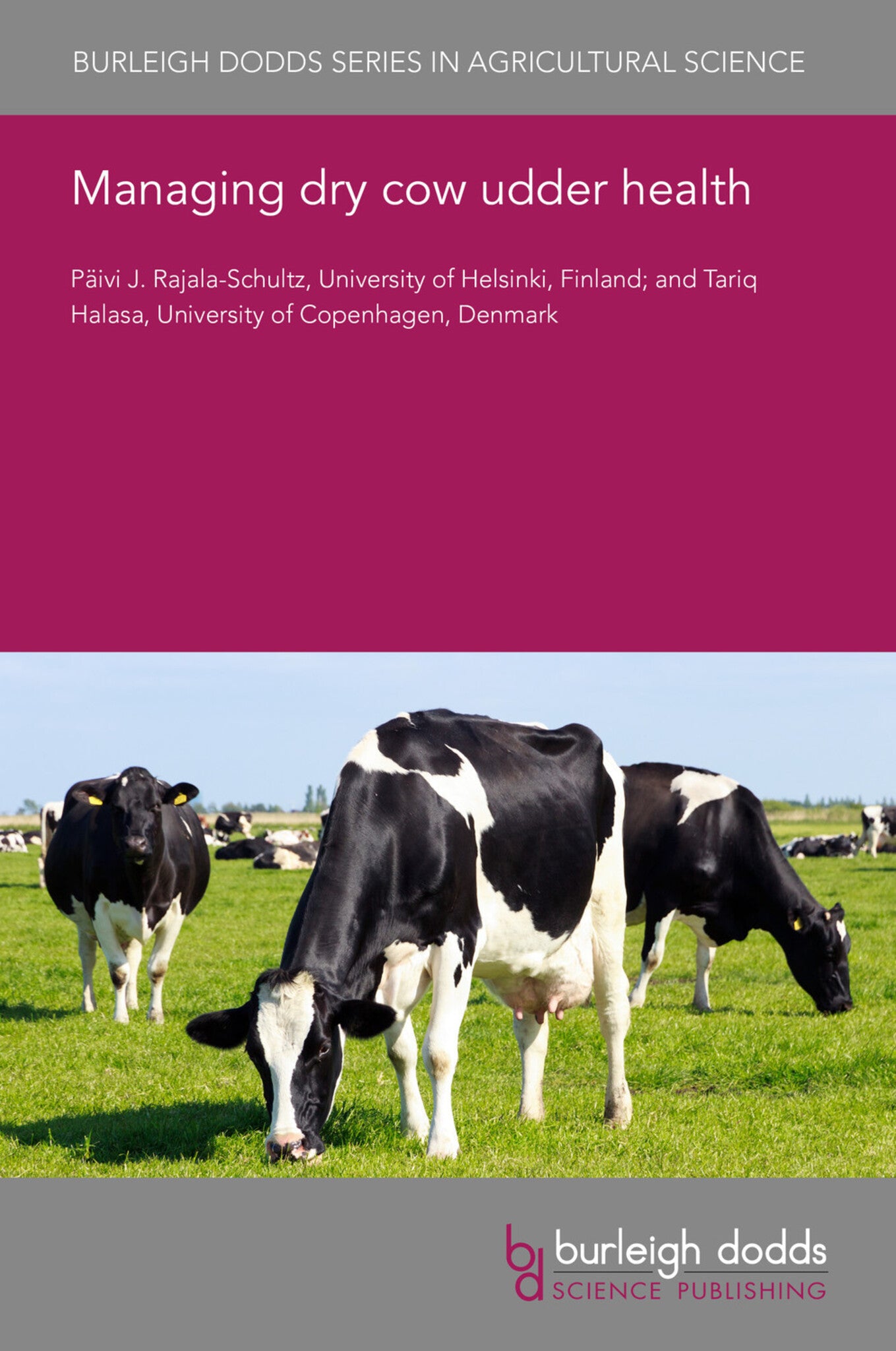We're sorry. An error has occurred
Please cancel or retry.
Managing dry cow udder health
Regular price
£25.00
Sale price
£25.00
Regular price
£25.00
Unit price
/
per
Sale
Sold out
Re-stocking soon
The dry period lays a foundation for a successful next lactation, especially from the udder health perspective. It is a high-risk period for acquiring new intramammary infections (IMI), but it also...
Read More

Some error occured while loading the Quick View. Please close the Quick View and try reloading the page.
Couldn't load pickup availability
- Format:
-
19 July 2021

The dry period lays a foundation for a successful next lactation, especially from the udder health perspective. It is a high-risk period for acquiring new intramammary infections (IMI), but it also provides an excellent opportunity for eliminating existing subclinical infections. The way cows are dried off and milking is halted at the end of lactation impacts the involution process, mammary health and cow comfort. Antibiotic dry cow therapy (DCT) has played a crucial part in mastitis control, but due to global concerns about increasing antibiotic resistance, the approach to DCT is evolving. This chapter reviews the current knowledge about the impact of milk cessation methods (abrupt vs. gradual dry-off) on mammary involution, udder health and cow comfort. The importance of dry cow therapy is discussed, especially in the light of current global concerns related to antibiotic resistance.

Price: £25.00
Publisher: Burleigh Dodds Science Publishing
Imprint: Burleigh Dodds Science Publishing
Series: Burleigh Dodds Series in Agricultural Science
Publication Date:
19 July 2021
ISBN: 9781801462327
Format: eBook
BISACs:
TECHNOLOGY & ENGINEERING / Agriculture / Animal Husbandry, Dairy farming, TECHNOLOGY & ENGINEERING / Agriculture / Sustainable Agriculture, Sustainable agriculture, Agricultural science

1 Introduction 2 Mammary gland involution 3 Milk cessation methods: impacts of gradual versus abrupt milk cessation 4 Dry cow therapy 5 Other dry cow management practices 6 Conclusion and future trends 7 Where to look for further information 8 References



